APOCRYPHAL BARSOOMS I
Part 1 of a 16,700-word article
by Den Valdron
CONTENTS
Introduction
Barsoom
is Mars, and Mars is a Shared World
Other
Writers and Other Stories on the Shared World of Mars
A
Note About Space Travel
PERCY GREG
1880
ACROSS THE ZODIAC
The Story
Where on
Barsoom?
CAMILLE FLAMMARION
1884
REINCARNATION ON MARS
GRAFFIGNY
& LE FAURE 1889
AMAZING ADVENTURES OF A RUSSIAN
SCIENTIST
The Story
Is this Barsoom?
MacCOLL 1889
MR. STRANGER’S SEALED PACKET
Is this Barsoom?
ROBERT CROMIE
1890
A PLUNGE INTO SPACE
GUSTAVUS
W. POPE 1894
JOURNEY TO MARS, THE WONDERFUL
WORLD
On
John Carter’s World?





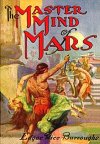

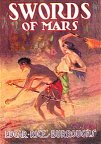



 |
Introduction
In the Biblical terms, the Apocrypha
are the unofficial books that are not part of the formal bible, yet they
were contemporary religious documents of the Christian or Jewish faith.
As such, they’re not part of the "official" religious canon, but represent
a semi-legitimage body of external lore.
Burroughs Barsoom stories constitute
the nine novels and six novellas written by Edgar Rice Burroughs.
This is the ‘canon’ or the ‘true and official’ Barsoom.
In a larger sense, the canon includes the Moon Maid, which references
Barsoom, as well as Carson’s Venus, which also references John Carter,
though more indirectly. The Barsoom series makes use of the
Gridley Wave, which means that it connects to Pellucidar, and Pellucidar
connects to Tarzan. Thus, the larger canon is all of Burroughs
inter-relating series, all of which, including Caspak and Poloda, must
be deemed to be taking place within the same Burroughs universe.
Everything else, including fanfiction,
comic strips, comic books, pastiches, artwork, movie treatments,
etc. is ‘unofficial’ stuff, outside the formal canon. The stories
of George Alec Effinger, the strips of John Coleman Burroughs, the work
of Alan Moore and discussions of Dick Lupoff are all Apocryphal.
And by and large, it’s troublesome apocrypha that doesn’t fit well with
the canon.
John Coleman
Burroughs' Green Martians, for instance, are drawn to conform to the
requirements of a newspaper strip and look nothing like the written descriptions.
Comic book stories either tell the official stories but get them wrong,
or tell new stories, but make such changes in characters that they’re not
consistent with the original works. But then again, this is
why the Apocrypha are Apocrypha, because they don’t quite mesh with the
Canon.
But there’s also another vein of
Apocrypha I propose to mine here. And that is, the Mars stories
of other writers from Burroughs time period between 1880 and 1940.
There is a basic commonality to most of the Mars stories by different writers.
They were, after all, writing about the same world, and sharing the same
assumptions.
Barsoom
is Mars, and Mars is a Shared World
Mars was well established both in
science and the popular imagination. The moon was originally
the world on which fantasists had set their journeys to outer space.
As late as the 1830's, hoaxes and stories about life on the surface of
the moon were being published. After all, the moon was pretty
huge in the sky. But through the 17th and 18th century as telescopes
improved it was increasingly clear that the moon was a dead, waterless,
airless world devoid of life. The possibilities of imagination
were closed off for the moon.
For Mars, those possibilities were
opening up. Telescopes, from Galileo on, showed Mars as a globe.
Moreover, features were discernible. In the 18th century, astronomers
clocked the Martian day, discovered the polar caps and watched them swell
and shrink. Mars was a world with a day the same length as our own,
with seasons like our own, divided into discernible regions of light and
dark, ice and snow. Clouds and storms were observed, proving
that Mars had an atmosphere and weather. Reputable astronomers speculated
about the possibilities of life and habitation.
Meanwhile, around this time, theories
of evolution and cosmic formation were developing and mixing in popular
consciousness. A kind of cosmic theory of evolution,
of life progressing ever upwards was emerging. Darwin’s theory
of natural selection was morphed into a sort of inevitable progression,
from fish, to frogs, reptiles, dinosaurs, mammals and ultimately humans.
In popular imagination ‘man’ was the inevitable ultimate result of evolution,
at least up to this point.
Thus, the thinking was that the
beings of other worlds would themselves be human, or reasonably close with
slight variations. The notion that alien beings might be radically
unlike ourselves was, if not heretical, certainly not unquestioned, though
people like Percival Lowell and H.G. Wells and the more strictly rational
argued like this.
The notion that life went through
a cycle of birth to death. Life began, grew, evolved to its pinnacle
as humans and animals were born, grew, and reached their peak.
And then, humans and animals, over time, aged, grew weaker and eventually
passed away, as did Life in general and even planets. This
shifted into a kind of notion explaining the solar system.
Venus the young world full of wet rains and primeval beasts, likely hot
and lush, full of oceans and primitive jungles. Earth
was the ‘just right’ world, in its prime, with the proper balance of ocean
and land, of rains and sun, sporting the sophisticated pinnacle of life,
man itself. Mars was the older world, past its prime.
Its air, self evidently thinning, its mountains and continents wearing
away, its oceans drying up, the whole planet cooling off. It
seemed logical that if Mars was further along than Earth in the cosmic
life cycle, that it would have life and intelligence, and that these would
be further advanced than ours. But further advanced was not
necessarily superiority, Mars was in its decline, and thus the intelligences
of Mars were in decline.
Apparent proof of intelligence on
Mars, and of the decline in that world, came in 1877 when Schiaparelli
announced his discoveries of Canals. Canals were big
during this time, the Suez canal bisected Africa and Asia, uniting the
Mediteranean with the Red Sea. The Eerie and St. Laurence canals
of North America extended shipping for hundreds of miles. The
Panama and Nicaragua canal projects promised to separate North America
from South and unite the Pacific and Atlantic oceans. Schiaparelli’s
‘canali’ included 66 razor straight lines, some of them parallel, some
of them crossing each other, running from presumably wet dark areas, through
dry regions. While people might argue over whether they were natural
or not, it was hard not to see them as the work of intelligent beings engaged
in irrigation on a dying, drying world.
It was also the same year that Mars'
two moons were discovered, moons unlike any others in the solar system.
It was a year of conjunction, of close approach, which happened only once
or twice every few decades, so most telescopes were engaged with Mars.
Mars was very big and very big news in popular consciousness.
For scientists and for writers and
the public, Mars was hardly a blank place. It was a very well defined
world, no more or less mysterious than Africa or Asia. We knew
what it looked like from a distance, we knew its size, its day, its weather
and seasons. We knew the light areas were likely deserts, we
knew it was an old world so that erosion had worn away its mountains and
continents. We knew that its seas were diminished remnants (as Schiaparelli
believed), though that perception evolved to the belief that its seas were
entirely gone (as Lowell believed), but still, moisture survived in the
sea bottoms. We knew it had life, probably much like our own.
And from the evidence of Canals, people assumed that there were intelligences,
a civilization probably much like our own, but trapped upon a dying world,
undertaking great works.
|
The result is that it was
quite natural for writers writing about Mars to essentially be writing
about a very similar place. As I’ve said, it's not a
blank slate, but rather a well known territory and writers wrote within
the knowledge of that territory and the science and pseudoscience beliefs
of the time. Mars, from the very beginning was a shared world,
much the same way that the American west was a shared world for different
writers fictional and non-fictional characters. Writers who
wrote the west took a shared setting, they weren’t dropping samurai and
gorillas in, but working with cowboys and gunslingers. Mars,
in its own way, was almost as rigourously defined for writers. So,
they tended to use the same ideas, and the same tropes over and over.
And it wasn’t just a dry dying world of deserts crossed by canals, with
evaporating seas and sheltered valleys.
The faculty of telepathy, for instance,
is almost universal. Telepathy was considered an advanced mental
faculty, a higher faculty, so it was only natural that the Martians, being
from an older world, should possess it in some degree. Besides which,
it got us neatly and quickly around the language barrier.
A great many, perhaps most of the
Martians encountered, including Burroughs, were human. Their skin
colours might vary, but they were basically human beings, though usually
from a culture more technologically or intellectually sophisticated.
Because Mars was believed to be a dying desert world, there was a subtle
tendency to draw upon elements of Arabian culture or 1001 nights by many
writers. The Arabian culture, or bastardized visions of it
in Europe, were seen as an old civilization, past its prime and in decline.
So often bits of that would get mixed up in various ways.
Alternately, writers might choose
to emphasize the ‘evolution’ of Martian society, of a race whose intellectual
attainments choked off its moral or its emotional side. There
were a number of stories depicting Martians whose intellectual sophistication
was balanced by a lack of emotion and often a lack of will or motivation.
These Martians were apathetics, accepting the fate of their world, lacking
the will to struggle. Of course, others were depicted as being
made monstrous for logic without emotion. H.G. Wells invaders
were the ultimate expression of this.
Apart from humans, interestingly
enough, winged manlike creatures were the next most popular. Partly,
of course, this was the apple not falling far from the tree.
Angels lived beyond the earth in Heaven. So it’s not rocket
science to imagine angel-like winged beings living beyond the earth on
worlds in outer space, like Mars or Venus. And it did make
a certain kind of sense, after all, the gravity was lighter so flying creatures
were more plausible. Between 1890 and 1920 there were at least eight
stories or novels featuring this sort of Martian, including the creatures
of H.G. Wells’ “The Crystal Egg” and Gustave LeRouge’s “Prisoner of Planet
Mars.”
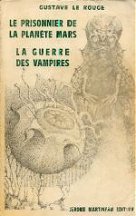
Other mythical or semi-mythical
creatures, often variations of human forms were seen. There were
four Martian stories between 1890 and 1920 which featured dwarves of various
sorts, often cave-dwellers. Giants showed up a few times, though
usually these were human giants. Even H.G. Wells’ creatures
began to show up repeatedly.
Mars was considered to be an Earthlike
world, so writers filled it with earthlike plants, mosses, trees, grasses,
shrubs, and usually mixed the colours up, adding red and purple after the
planet’s colour. Earth was a green and blue world, Mars was
obviously a world of reds and rust. And of course, it was presumed
to have its own animal life, both similar and different from Earthly fauna.
Again, sometimes the apple didn’t fall far from the tree, both Wells and
Arnold included apes on their Mars.
So, Gustavus Pope’s Journey to
Mars, Edwin Arnold’s Gulliver Jones and Gustav LeRouge’s Prisoner
of Mars weren’t the sources of Burroughs' A Princess of Mars.
Rather, they were all shaped by the same planet, including the views of
the planet, the beliefs in ‘inevitable evolution’ and life cycles on planetary
scales. In a similar way, the Cisco Kid wasn’t the inspiration
for other fictional or real gunslingers, they were all products of the
same setting.
It’s all happening on the same Mars.
It may be an imaginary Mars, and each writer may go off in a different
direction, but in a sense, the Mars of novels and stories of 1880 to 1940
was a shared universe, a shared world.
Burroughs just called his Barsoom,
but the reality is, that he was simply writing in the same metafictional
Mars that everyone else was. But here’s the thing about Barsoom.
There was just so damned much of it. Burroughs Barsoom stretched
out to nine novels and six novellas, thousands of pages and hundreds of
thousands of worlds, and within that, swamps, rivers, mountain ranges,
dried sea beds, cities, races, religions, cultures and history. In
short, Barsoom overwhelms all the other renditions of the fictional Mars
of this day. In contrast, Matthew Arnold wrote only one Mars
novel. Otis Adelbert Kline wrote two and a novella. H.G.
Wells wrote a novel and short story, but only the short story depicted
the actual planet. Gustave LeRouge wrote two novels, but only
one was actually set on Mars. Pretty much everyone else wrote
single novels, short stories or included Mars visits as parts of larger
works. Many of the other works, because of their smaller volume
also tended to describe smaller slices of Mars. Arnold’s Gulliver
Jones wanders about in a relatively small area, Wells’ story describes
only a single valley. So the result is that on any composite
vision of Mars, Barsoom tends to occupy a lot of the territory.
So why not just call it all Barsoom, since Mars is no longer the world
we dreamed of.
Other
Writers and Other Stories on the Shared World of Mars
That old shared Mars, the one that
endured from 1877 to 1950, the one of science and myth, popular consciousness
and writers fantasy, has vanished now. The Mars revealed by
space probes has largely replaced it. So Barsoom is,
for better or worse, a good a name as any for that older shared Mars.
Now the thing is, if you’ve got a shared meta-world, then the natural temptation
is to locate it all together. Thus famous real and fictional gunslingers
crossed paths in the old west, and H. Rider Haggard’s Africa rubbed shoulders
with Burroughs.
More recently, there have been literary
pastiches by people like A. Bertram Chandler, George Alec Effinger and
Alan Moore placing John Carter in conflict with Wells' Martian invaders,
throwing Gulliver Jones or Otis Albert Kline’s Mars into the mix.
In part because of the connections to Burroughs between Wells, Arnold and
Kline, I’ve explored and tried to place each of these writers' "Mars" on
the same world as Barsoom.
But anyway, if these three writers'
works can be incorporated into Burroughs Barsoom, what about others?
Are there other writers stories or novels about Mars that will fit in too.
Actually, there are. Now mostly obscure and forgotten, there
are a number of stories and novels from between 1880, after the discovery
of the canals and moons of Mars, and 1940 when the vision of Mars as a
live world had faded.
Most of these works are out of print
and quite hard to find. This poses some problems and if you
want to track them down and read them you may well be out of luck.
Moreover, because I myself haven’t read most of them, I can only go by
brief descriptions. Descriptions which are extremely tantalizing,
but which, unfortunately do not allow the sort of detailed and thorough
analysis of geography, biology or culture, which would allow us to place
a work in context on either Barsoom or the geography and geology of real
Mars. Unfortunately, I’ve only got the broadest strokes to work with,
and thus, my comments are wholly speculative and I can hardly place too
much weight on the poor delicate things.
Finally, I must note that in some,
perhaps in many cases, some of stories will not and cannot fit on Barsoom
at all, or contain elements that are completely inconsistent with what
we know of Barsoom. For instance, the Human Pets of Mars features
Martians who are essentially ten-legged octopi, or decapods, who have no
resemblance to anything, and who breeze back and forth easily seem completely
incompatible with Barsoom. There’s also Thomas Edison’s Invasion
of Mars and Nikola Tesla’s Invasion of Mars about either of
which, the less said the better, but feature fleets of Earth spaceships
travelling out to wreak devastation on the red planet. Inspired originally
by H.G. Wells, these were simple potboiler newspaper serials, bereft of
imagination or intelligence, but which presumed technology and actions
that simply cannot have taken place in Burroughs universe.
And of course, this work ignores
the Burroughs inspired Mars stories of the 50's and 60's, like Michael
Moorcock’s "Michael Kane," Leigh Bracket’s Sword of Rhiannon
and "Eric John Stark," and A. Bertram Chandler’s Alternate Mars.
This obviously cannot be complete.
There are doubtless novels and stories that would fit that I’ve missed,
as well as many that won’t fit. But that’s okay.
Mostly, it just has to be interesting and entertaining.
A
Note About Space Travel
Initially, I was going to dismiss
any mention of Earth or Martian spaceships as being completely contradictory
to the Burroughs universe. Where Earthlings or Martians travel
back and forth by spaceship seemed at first to be quite contradictory to
the established Burroughs canon.
After all, in the Moon Maid, Burroughs
establishes that the first official Barsoomian space expedition to Earth
is launched in the 21st century, in 2015, and is lost. This
is followed, a few years later by Earth’s first expeditionary ship to Barsoom
in 2024, which makes it only as far as the moon.
So talk of rocketships or spaceships
in the late 19th or early 20th century seems ludicrous in the Burroughs
universe. Didn’t, oughtn’t, can’t and ain’t happening.
If they can’t manage it well into the 21st century, there’s no chance in
the late 19th.
However, I’ve reconsidered.
Carson ‘Wrong Way’ Napier builds himself a rocket and flies to Mars in
1932, nearly a full century prior to the ‘Moon Maid’ expedition.
Now to be fair, he doesn’t get to Mars, but he does wind up on Venus, so
there’s proof that local interplanetary distances can be traversed by Earthlings
in the earlier part of the 20th century, and perhaps even slightly earlier.
And further, given that we’ve borrowed
War of the World and "The Crystal Egg" from Mr. Wells, we must assume
that technology from the Martian invasion was in fact cannibalized and
might have made it into the hands of intrepid space explorers or inventors.
We might also consider that in his writings, anti-gravity is a fact of
at least one of his novels, First Men in the Moon, where his protagonists
encounter insectlike beings who occupy the outer (but not inner) surface
of the Moon. Anti-gravity shows up in quite a few space voyages.
The question of course, is why there’s
such a huge gap between Carson’s lone expedition of 1932 and the Moon
Maid expedition of 2024? This problem, on its first look,
seems insoluble. But I think a couple of factors come into play.
First, it is likely that the Martian
invasion of the War of the Worlds put a damper on any thoughts of
official space travel. Earth had survived an invasion, there
was no future invasion apparently forthcoming, why go looking for trouble?
Space travel was not an official priority, and was unofficially discouraged.
This left only the occasional wealthy malcontent or consortium of intrepid
and financially secure explorers to take a chance.
Secondly, we must note that the
Barsoom was not only an official, but a major expedition. It had
a large crew, provisions for years, staterooms, etc. The Moon
Maid's Barsoom was the equivalent of a Battleship or of Admiral Perry’s
Great White Fleet. Meanwhile, Carson’s attempt was in comparison,
the equivalent of a relatively small sailboat crossing the Atlantic or
Pacific. Yes, it’s theoretically possible to cross the Atlantic
in a sailboat, but there’s a very good chance of not making it at all.
Those space travellers of Earth
of the late 19th or early 20th century were probably sailing against the
odds, and for those few who managed to reach a neighboring world and live
to tell about it, there were likely many who set off and were never heard
from again.
Out in space, even in the mid-19th
century, Barsoom’s civilization definitely possesses anti-gravity technology,
through its mastery of the eighth and ninth rays, and during the reign
of the Warlord, in Swords of Mars, begins to make exploratory flights to
Thuria. Yet, the trips to Thuria are not so much new or revolutionary
technology, as the application of technologies (environment seal, life
support, anti-gravity etc.) that Barsoom has had lying around for thousands
of years.
Further, with respect to Barsoom,
we note that technology is not uniform but varies locally.
Helium’s flyers are the most advanced known. The First Born’s
flyers, however, are designed for submersible flight. Jahar’s
flyers are technologically inferior compared to Barsoom. Kaol
has no flyers at all, though they later acquire them. Meanwhile,
isolated regions such as Manator, Ghasta and Bantoom have no flyers and
no firearms. Even more isolated societies, such as the Orovars
of Horz, have even lower technology.
Yet, we must note that once upon
a time, the level of technology on Barsoom was higher even than that of
Helium today. Indeed, in another paper, I’ve speculated that
Thuria may actually be an artificial world, created tens or hundreds of
thousands of years ago by the fallen civilization of the Orovars.
So it’s possible that somewhere on Barsoom, some lost and isolationist
city still possesses the capacity to travel through interplanetary space,
should it wish to.
So, theoretically, we might have
isolated spaceships from Barsoom, the products of isolated and isolationist
cities, which manage to make it to Earth. So, in the context
of Burroughs universe and Barsoom, we might be prepared to accept some
limited occasional normal space travel between worlds.

PERCY GREG
1880
ACROSS THE ZODIAC
In 1880, one of the first Mars
novels was Percy Greg’s Across
the Zodiac: Story of a Wrecked Record. Allegedly, this chronicled
and event taking place 50 years before, which would place it in 1830.
The
Story
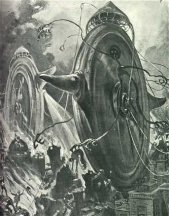
In this account the Astronaut,
a privately-built ship of 150 feet long, 50 feet wide and 20 feet high,
was the first human spacecraft to travel to Mars. The
Astronaut was propelled by Apergy, but a force that had to be generated
and controlled, something more similar, perhaps to the Barsoomian bouancy
rays. The electrical generators recycled the ship’s air and powered
the Apergy machines which directed atomic force to repel the Sun's
gravity. Which seems like a very, very anomalous technology
for 1830's Earth.
Mars, the ship's destination, had
an "advanced race" practicing polygamy and atheism; the Martians also had
dirigibles, poison-gas guns, electric tractors, 3-D talkies, and the duodecimal
system. His Martians had developed a form of utopia based on advanced
technology and telepathic ability, which enabled them to punish people
for wrong thoughts. However, they did not have resistance to a disease
of earthly origin "contracted from rose-seeds," so the hero left in a hurry.
Actually, the Greg Martians don’t
seem all that much like Barsoomians. They aren’t fun loving
enough. The telepathy thing, of course, is shared with Burroughs,
Arnold and Wells, but they didn’t get that from Greg, or from each other.
Rather, all four authors, and many others, picked up on a pseudo-science
notion that was floating around.
Greg’s Martians are an ancient civilization,
so ancient, and so intellectually evolved, that they have lost touch with
feelings. They are passive and apathetic, with little interest
in the world around them.
This sort of "listless ancient decadence"
shows up again and again in Mars novels of the era. Before
Wells put his spin on things, the ultimate result of intellectual development
at the expense of emotions was apathy. The super-intelligent
civilizations of the Martians were frequently depicted as passionless,
placid and lifeless. The super-civilizations of these Martians
had no gumption, no motivation. In the end, they had not the
motivation to fly their own spaceships.
Wells of course put a different
spin on it. His super-intelligences were highly motivated,
the loss of emotions simply made them more ruthless and relentless.
Burroughs, for his part, restored vitality to his Martians, depicting them
as struggling valiantly if fatalistically as their world died slowly.
In a sense, in Burroughs, Barsoom is dying more quickly than its inhabitants,
so they’re kicking up a fuss.
Where
on Barsoom?
Does this mean that the passive
Martians are incompatible with Barsoom? Perhaps not.
Barsoomian civilization, the dominant cultures that John Carter knows,
are shaped by the great collapse. Everything from semi-feudal
slavery, city-state political organizations, the rule of war-chiefs in
the form of Jeds and Jeddaks , the emphasis on war and warriors over science
or trade, were all formed in the great collapse of the previous Barsoomian
civilizations. And the thing is, that although Barsoom is no
longer in a state of active collapse, these societies have not changed.
They are still shaped by that disaster.
But was this the only response to
the great disaster? Perhaps some societies, partially sheltered
from the ongoing collapse, simply turned inwards. They made
fatalism a religion, becoming intellectual, unemotional, passive, taking
very little part in the affairs of the planet. For convenience,
we’ll call them Apathetics.
On Barsoom, cities of Apathetics,
some of them conceivably preserving extraordinary levels of technology,
may exist in remote locations, uninvolved with the lands around them and
isolated from the mainstream of Barsoom’s warrior cultures.
So, conceivably, these Martians
might well tuck away neatly in some corner of Barsoom.

CAMILLE
FLAMMARION
1884
REINCARNATION ON MARS
1884 - Camille Flammarion - Les
Terres du Ciel (The Worlds in the Sky) (Marpon-Flammarion).
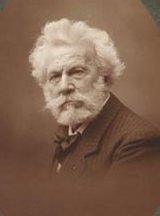 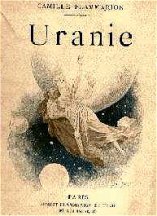 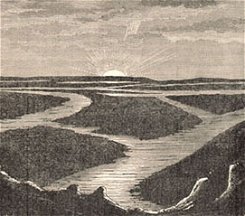
A man and woman who died at the top
of a mountain find themselves reincarnated on Mars, a touching reunion
that includes a few descriptions of martian flora and fauna.
Then a few years later, we have in 1889, Camille Flammarion writing -Uranie
(Marpon-Flammarion)
wherein a man awakens on Mars and meets his reincarnation.
I’m not sure if this fits into Barsoom
or not. Forget about any geographical description, and I have
no idea whether the flora and fauna is at all compatible. However,
Camille Flammarion is worth a couple of Burroughs footnotes (see
ERB's Personal Library).
First, because as an astronomer, he was noted for compiling all of the
observations of Mars over two centuries, a landmark and pivotal work of
scholarship which both Schiaparelli and Lowell built upon (See
the Valdron Barsoomian Geography Series).
Second, and for some purposes, much
more interestingly, Flammarion in his fiction popularized a notion that
people were reincarnated, not on Earth or Heaven, but on Mars.
This was apparently a fad. The significance of this shouldn’t
be underestimated, as arguably, John Carter, Ulysses Paxton and Tangor
appear to die, or are brought near death, before going off to their respective
worlds. I’ve called the phenomenon Astral Teleportation, but
quite possibly, it is actually death on this world and reincarnation on
another world. Burroughs once, talking about religion, expressed
a hope of being reincarnated on some other world, so perhaps he took this
critical idea directly or indirectly from Flammarion.

GRAFFIGNY
& LE FAURE
1889
AMAZING ADVENTURES OF A RUSSIAN
SCIENTIST
1889 Henry de Graffigny
& Georges Le Faure - Les Aventures Extraordinaires d'un Savant Russe
[The Amazing Adventures of a Russian Scientist] - Volume 2: "Le Soleil
et les Petites Planetes" [The Sun and the Small Planets] (Edinger).
The
Story
 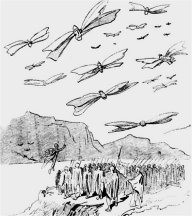 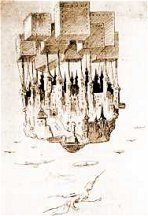 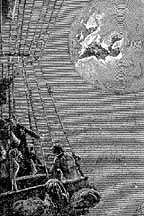
A team of French and Russian
scientists explore the Solar System on the Ossipoff.
Through three volumes, they explore the inner planets, the moon, and then
the outer solar system. In the second volume, they make a short
trip to Mars, where they meet the inhabitants.
The heroes arrive on Phobos, which
is atmospherically connected to Mars, and travel in a balloon down to the
Red Planet, wearing pressure suits. During the next five chapters, they
meet winged humanoids, masters of an aerial technological civilization.
Artists drawings depict bald, insect-winged human-like creatures wearing
robes, as well as a remarkable floating city in the sky, hung from box
kites.
Is
this Barsoom?
All right, in John Carter’s Barsoom, Thuria is not normally
atmospherically connected to Mars, no iffs ands or butts. On
the other hand, in Beyond the Farthest Star, Burroughs' Poloda
solar system features a ring of worlds all sharing an atmosphere, so that
one can literally fly an airplane from one world to the next.
Well, if this is the normal state for Poloda, then obviously,
this is one more peculiarity of physics in Burroughs universe.
Mars and Thuria are extremely close bodies, among the closest in the solar
system, so its possible that this same kind of phenomena may appear between
Barsoom and Thuria under freakish special conditions. Our explorers
may well have been mistaken when they took it for a permanent state.
As for the winged humanoids, these are not part of Burroughs
writings, but they do seem similar to the flying Martians of Wells’ ‘The
Crystal Egg’, as well as to the butterfly winged ‘little people’ of Otis
Adelbert Kline’s Swordsman of Mars as well as a handful of other
similar creatures as you will see in the subsequent reports.

MacCOLL
1889
MR. STRANGER’S SEALED PACKET
In Mr. Stranger's Sealed Packet, MacColl was also
something of a pioneer in his choice of subject. It was the third novel
in English about Mars to be published. In 1880 Percy Gregg published Across
the Zodiac, and in 1887 Hudor Genone published yet another novel with
Mars as its subject,
Bellona's Bridegroom: A Romance. MacColl's
Mr. Stranger's Sealed Packet then followed in 1889, and before the
turn of the century, another eleven novels about Mars were published in
English.
McColl flies off in an armed and armoured spaceship to
visit Mars. Once he gets there he discovers that Mars is quite
habitable. It possesses gigantic prehistoric seeming animals,
and vegetation similar to Earth except that it tends to be scarlet or purple.
McColl’s stranger describes spectacular scenery, including
an Ocean:
“It was a glorious spectacle.
A majestic ocean lay before me, rolling its heavy swell against the rocky
bases of a long, sweeping range of precipitous mountains underneath me.
This range was broken and indented in many places by deep ravines, down
which foaming torrents rushed headlong, forming numberless cascades and
waterfalls, the confused noise of which was almost deafening. The sea ran
in among the clefts and fissures of the rocky shore in long and narrow
streaks--in some places cutting whole portions off and forming them into
islands.”
The Martians turn out to be human, a race or nation of people
calling themselves the Gremsun. Their skin colour is bluish
and they have large hazel eyes. Both features are caused by the food
they eat. The Martians, including men women and children dress
uniformly in what looks essentially like a Victorian bathing suit--a single
garment, exposing only the head and neck, the arms below elbow, and
the feet and legs to about the knee, red for men and green for women.
Both sexes had short, black, curly hair. They all speak and act like
Victorians, they’re civilized to a fault. These people are
dull, dull, dull. Their technology is sophisticated, they distill
their food from the air. Though the society is technologically advanced
in that it has self-propelling carriages, electric light and phonographic
machines that can register speech as writing, it lacks totally the technology
of war.
This is unfortunate for the Gremsun because Mars also
has barbarians, who are called the Dergdunin. The war with the barbarians
gives Stranger the opportunity to play the hero, as the spaceship is also
equipped for defence and attack, and so he saves the peaceful civilized
Gremsun from the barbarian hordes.
The Stranger also winds up falling in love with and marrying
the daughter, Ree, of the Martian family he has been staying with.
The Stranger eventually brings his Martian wife back to Earth for sightseeing,
but it turns out, in a plot development that anticipates Wells, that she
has no resistance to earthly bacteria and dies. This by the way,
is not a particularly shocking development, Englishmen in the colonial
days were always travelling to foreign colonies and dying of local bacteria.
It was one of the known hazards of colonialism. The Stranger,
touched by tragedy, drops off his story with earthlings, and returns to
Mars to spend his life.
Is
this Barsoom?
If this is Barsoom, then we can only say that Mr. Stranger
has landed upon the dullest and most repressed and inbred part of the planet.
We can only place this as a Barsoomian society in an extremely isolated
and apathetic enclave.
That having said, many of the elements of Burroughs Barsoom
are present. The civilized nation with its super science, the
barbarians prepared to tear the whole thing down, the romance with a Martian
debutante.
Further, the blue skin of these Martians is remiscent
of Gustavus Pope’s blue-skinned Martians of Journey to Mars.
The biggest obstacle, apart from the Gremsun being so
weeny and pathetic, and the tedious pace of the novel is the fact that
the Stranger records a Martian ocean. Not on Barsoom buddy!
Still, it may be that the Stranger has been mistaken in his observations,
he may have surveyed one of the surviving seas, like Korus or the Opal
Sea. Or he may have observed a rush of water following the polar
melt.
Without the actual text, it’s hard to say.
Still, given other similarities, we might, for the time being, provisionally
locate this on Barsoom, although it’s not clear where exactly.

ROBERT
CROMIE
1890
A PLUNGE INTO SPACE
1890. Robert Cromie's A
Plunge into Space (prefaced by Jules Verne)
The
Story
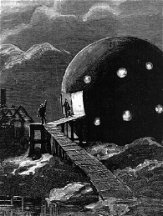 This tale also featured a spaceship, the Steel Globe, a jet black metal
sphere, 50 feet in diameter, powered an electrically-generated form of
anti-gravity. It was secretly built on an undisclosed site in Alaska, and
its destination was, once again, Mars.
This tale also featured a spaceship, the Steel Globe, a jet black metal
sphere, 50 feet in diameter, powered an electrically-generated form of
anti-gravity. It was secretly built on an undisclosed site in Alaska, and
its destination was, once again, Mars.
The more highly developed Martian reason had made Mars
a paradise even though growing conditions had gotten worse. But their reason
had also been developed at the expense of their emotions. They had lost
their vitality and motivation too. In this novel, that meant the Martians
could not get enthusiastic about anything. Not only could they not get
enthusiastic about arrivals from Earth; they could not get enthusiastic
about their own space travel. They had it and lost interest in it.
In short, they were our second great example of that stream
of Barsoomian culture we choose to call the Apathetics.

GUSTAVUS
W. POPE
1894
JOURNEY TO MARS, THE WONDERFUL
WORLD,
ITS BEAUTY AND SPLENDOR,
ITS MIGHTY RACES AND KINGDOMS,
ITS FINAL DOOM.
Pope was an American doctor living in Washington D.C.,
who wrote both fiction and nonfiction. He followed up his Journey to Mars
with Journey to Venus, introducing some of the same characters. He also
did an inner world novel, and a fairly well received book about Shakespeare.
Arnold's Gulliver Jones was never published in the United
States during Burroughs' time. It only appeared in England. Pope has a
leg up in that his books were published in the US. But of course, we've
no evidence that Burroughs ever saw either.
Still, Pope's book has his adherents who argue that its
possible claim to have inspired A Princess of Mars is as good or
better than Gulliver Jones. Among the proponents was noted SF critic
and historian Sam Moskowitz. The novel begins with our protagonist
Frederick Hamilton, a Lieutenant in the US Navy, serving on the USS Albatross
in the Antarctic seas when it wrecks. Hamilton and a Maori seaman (a comic
relief racist stereotype, unfortunately) are cast up on a barren rocky
island, although at the ends of his strength, he manages to rescue a weird
looking stranger and then passes out.
When he wakes up three weeks later, he's on his way to
Mars. Hamilton has encountered an expedition of red, yellow and blue Martians,
who use telepathy to communicate with him, and who travel space by riding
the magnetic lines between the two planets' poles. The blue-skinned Martians
are the "Nilata," and the yellow-skinned men are the "Arunga," though this
may refer to their cities or nations, rather than their races.
Obviously, these three races are fairly suggestive, since
Burroughs Barsoom also has its red and yellow Martians. Coincidentally,
Burroughs yellow Martians are inhabitants of the north pole, and are shown
to have mastered magnetic technology, areas that figures prominently in
Pope's story.
Travel between Earth and Mars in Gustave's story, involves
travelling along magnetic pathways, a sort of cosmic short cut, which begins
and ends at the north pole of each planet. This is why Hamilton meets his
Martians at their base at Earth's south pole, and why he winds up in the
sea around the pole.
As for Blue Martians, well, Burroughs does not record
any. But Burroughs does have blue haired Thurians, who I've argued in Secret
of Thuria are actually an isolated Barsoomian colony from their
previous civilization. So it might well be that this expedition includes
Okars, Red Men and Thurians. Alternatively, at least one of the other
Martian novels, McColl’s Mr. Stranger’s Sealed Packet provides for
a race of 'blue' Martians, so this may simply be a race undiscovered
by John Carter. I wonder if they sing?
Interestingly, Hamilton at first does not realize these
people are Martians. Why would he? His first theory is that they are inhabitants
of Pellucidar, or at least, of a hollow inner earth, and have come into
the surface through the polar opening. It's a weird little overlap with
Burroughs, notable because, as I said, I believe Hamilton also wrote
an inner world novel, which further identifies us with Burroughs universe.
Anyway, on arriving at Mars, the spaceship, riding lines
of magnetism, splashes down near one of the poles, winding up in a shallow
polar sea. This is, itself, not necessarily inconsistent with Barsoom.
The Martian poles are the final great bodies of water on Mars and feed
the canals, so it stands to reason that in the summer, their edges might
be slushy and produce a rim of lakes or seas.
Hamilton finds that the Martians, like John Carter's Barsoom,
combine a feudal society and swordsmanship with high technology. They have
crystal globes (shades of Wells and Arnold), 'ethervolt cars' which use
anti-gravity batteries, and spindle-shaped aircraft, both of which are
fairly reminiscent of Barsoom's flyers.
I'm not too concerned with differences in names and terminology,
after all, both Hamilton and Carter are translating their respective Martians
into English, so its quite possible that they might take the same terms
in the same language and render it differently in English.
Hamilton discovers, like Carter, that his strength on
Mars has doubled, though he attributes this to more oxygen in the air,
rather than gravity. He observes that the Martians travel on giant birds,
much like the Malagors that appear in two of Burroughs Martian adventures,
or the Gawrs that appear in Kline’s two Martian adventures.
Anyway, once he arrives on Mars, Hamilton travels about
a bit, visiting Mars wild seas and encountering sea monsters within, traveling
through kingdoms, enjoying banquets and festivals. He learns many interesting
things about Mars, including that the population is eight billion, that
the canals visible from space are actually densely packed urban areas,
and other cool things which are apparently quite incompatible with Barsoom.
During one festival, he rescues the beautiful yellow-skinned
Princess Suhlamia from drowning, and of course they fall in love. This
introduces the worm of intrigue, since Prince Diavojahr also had his eye
on Suhlamia. Diavojahr is a bad egg, since he's half Plutonian. He challenges
Hamilton to a duel and is soundly beaten. Diavojahr then conspires to have
Hamilton accused of treason and condemned to death in order to blackmail
Suhlamia into marrying him. Luckily, some of Suhlamia's friends rescue
him.
But there's a bigger problem. Phobos and Deimos, Mars
Moons, are about to fall on it. Or perhaps the danger is a rain of asteroids
or meteors. This isn't really clear from my internet searches. But the
imminent threat is the reason for the original expedition to Earth. The
Martians are looking to relocate. So off Hamilton goes to Earth to look
for a tidy place to pack eight billion Martians.
While he's gone, disaster strikes, but not in the form
of asteroids. Rather, Prince Diavojahr has instigated a palace revolution
and is trying to take over Princess Suhlamia's nation. He threatens to
shut down the magnetic transmitting station to make it impossible to return
to Mars. The novel ends with Hamilton passing on the manuscript he has
written, preparing to return to Mars.
But things must have worked out all right because when
next we see Hamilton in Journey to Venus he's with his Princess Suhlavia,
time has passed and they're heading off to Venus. I can only assume that
the Phobos and Deimos, or the asteroids and meteors missed Mars after all.
Anyway, that's as much as I've been able to glean from
internet researches. The book is described as slower paced than Burroughs'
book. Critics have noted that it's often dragged down by expository travelogue
stuff, or Jules Verne technobabble. Hamilton, as a protagonist, is too
perfect and therefore dull. And of course, the racist treatment of the
Hamilton's Maori companion is offensive.
Alas, there's only one Burroughs, and if his predecessors
had had his touch, we would have remembered them better.
On
John Carter’s World?
Sounds familiar? Published some 18 years before
A Princess of Mars and 11 years before Gulliver Jones, science
fiction historian Sam Moskovitz has written a paper suggesting that it
may well have been the real inspiration for Burroughs' work.
The similarities lead to the novel being re-published in the '60s, with
a foreword by Moskovitz, setting out his theory. Apart from
the many similarities, this novel was actually published in America.
Gulliver Jones was published only in England.
Is Frederick Hamilton's Mars really John Carter's Barsoom?
Setting aside the hard kernel of apparently contradictory material which
I'll address later, there are endless remarkable similarities. The red
and yellow races, the polar/magnetic thing, the high culture/feudal society,
the princess, the derring do, the giant birds, swordplay and anti-gravity
ships.
The one really difficult thing to swallow is that these
Martians have space travel, or at least, some limited and special type
of space travel involving riding magnetic lines. This seems beyond the
technology we know of in Helium. But then again, Helium may not be the
technological apex. It may be that some isolated and isolationist city
has preserved some of the space travel technology of the previous age.
In any event, its clear that the space travel of the Martians depicted
here is not conventional space travel, but a sort of special loophole,
which may not be very easy and in fact which may only exist under certain
conditions.
In fact, if we wanted to play it this way, we could suggest
that this isolationist city of either Blue, Red or Yellow Martians may
be the willing or unwilling, direct or indirect source of the anti-gravity,
space travel technology used by Earthlings in the late 18th and early 20th
centuries.
Unfortunately, with the information that we have, we can't
really locate Hamilton's journeys on Mars or Barsoom with any reasonable
certainty. It's likely, given the yellow Martians, that he's mixed up with
the North Pole. He clearly is landing in one of the polar regions during
the height of the summer melt in that hemisphere, and he does seem to go
on a bit of a tour through the populated regions. But unlike Wells, Arnold
or even Le Rouge we don't have enough geographical information to work
with.
So, what about the apparent contradictions? The seas Hamilton
describes, the eight billion Martians he reports, Diavojahr's half-plutonian
ancestry, the heavily populated canal regions and so forth? If these things,
any of them, are absolutely literally true, then there's no way that Hamilton's
world could be Barsoom.
Now, I suspect if I keep slagging the Wold Newton types,
I'm going to get into a fight sooner or later. But what the heck, eh? The
Wold Newton types start with the assumption that their core works are all
fictionalized and modified versions of adventures that really happened.
Names have been changed to protect the innocence, writers have omitted
certain facts, added certain ones in to liven up or fill in blank or dull
spots in the narrative. So, they're dedicated to excavating the 'true'
story from the fictional ones. Which means that they can do nifty things
like cross the works of different authors, something that I'm dabbling
with here. But it also means that they freely mix and match their mediums,
taking bits and pieces from everything from books to comic strips to movies
and television, without worrying as to the 'authenticity' or 'canonical'
nature of a story. Thus, as far as James Bond goes, an Ian Fleming novel,
a movie and a cartoon are all on the same level for instance. Of course,
when you're casting your net this wide, you pick up all sorts of contradiction,
but since these are fictionalized versions of real events, that means that
the contradictions are obviously invalid. And since there are gaps, one
is entitled to fill in the gaps between various fictional works by inventing
new facts, or even substituting the fictional facts for your new ones.
The result, occasionally is a towering incandescent mess which all too
often collapses under its own weight. The Wold Newton stuff works best
when it tries to stay tightly confined within a particular set of defined
canonical works.
For my own approach to these crossovers, I use a different
tactic. I assume that the events and information depicted in a work are
true, at least so far as the narrator or protagonist goes (a fine but important
point). And I try to be more stringent in defining my canons. One of my
favourite devices is the 'unreliable narrator.'
I'll give you an example: John Carter is a vicious, vicious,
vicious bastard. Now, the thing with Carter is that it's hard to realize.
All of his stories are narrated by him, and he sets great store by the
chivalric virtues. Yet while dueling a Thern in Gods of Mars, he
casually breaches Barsoomian chivalry by pulling out a pistol and shooting
him. Later in Warlord of Mars, dueling a superb Okarian, he distracts
the man and runs him through while his back is turned. Even later, while
spending time in the First Born Valley of Kamtol, he
sadistically and slowly cuts an inferior swordsman to pieces in a duel.
This is not a nice guy. It's true John Carter puts great store by chivalry
and has many fine qualities. But he's also got a mean streak a mile wide.
This is a man, after all, who went from being a slave to a chieftain of
Tharks in record time. The lesson: There are subtle discrepancies between
what John Carter tells us and what he actually does.
A similar case is Gulliver Jones, a man who is clearly
a petty thief. When you read Gulliver, one of the things you'll notice
is he's always casually and innocently tucking small valuable objects into
his pocket and then forgetting about them. Gulliver is also clearly not
one for long range thinking, despite several warnings of Ar-Hap's plans
to invade the Hither city of Seth, he never stops to realize or even thinks
to warn anyone. In short, the text of the novel presents to us, a picture
of Gulliver slightly at odds with, and substantially less flattering than
the Gulliver who narrates.
Then there's Julian of the Moon Maid, who works
quite hard to explain the Moon's inner world to us, but speculating with
only limited evidence and without a lot of background, it's quite likely
he gets quite a few things wrong.
And of course, the most practical example is Carson Napier,
a self-styled interplanetary explorer of boundless confidence, who, we
discover over and over, couldn't navigate his way out of a paper bag. When
you're with Carson, you're about to get lost, is the running theme of his
books.
All of this shows us is that the narrators are, to some
degree unreliable... Although that's an ugly word. The better term, perhaps,
is fallible. They can make mistakes, they can get things wrong, they may
misunderstand, misinterpret, jump to the wrong conclusions. Often their
observations are limited or partial, they, like the rest of us, must rely
upon what they are told.
So, in Journey to Mars, consider our protagonist, Frederick
Hamilton. Is he unreliable? Fallible? Consider this: On a planet with only
40% gravity, Hamilton concludes or accepts that his strength has apparently
doubled because the oxygen content in the atmosphere is slightly richer
in oxygen....
Hello? Duh! But let's be gentle with poor Hamilton, he's
not a scientist, he's a 19th century naval man transported to another planet.
Sure, he got it wrong, but he made an honest mistake. So the question is:
Is it possible he really is on Barsoom and that the discrepancies we see
are merely mistakes or misinformation on his part.
Here's another. The Martians believe, and thus Hamilton
believes, that Phobos and Deimos, Thuria and Cluros, are about to fall
from orbit. (Which might explain the participation of blue haired/skinned
Thurians on the Earth expedition). But, obviously, both in Hamilton's succeeding
novel, on Burroughs Barsoom, and in real life Mars, this doesn't happen.
Thuria and Cluros remain happily in place. Hamilton's Martians, and therefore
Hamilton himself, have simply gotten it wrong. Or Hamilton may have
misunderstood the time frame by twenty million years or so.
Does Hamilton's Mars really sport eight billion people,
or did he make a mistake transliterating Martian numerical terms into earth
ones? In fact, Burroughs himself made such a mistake when chronicling Martian
measurements, he left a critical unit out. Or possibly, did the Martians
themselves exaggerate their numbers, possibly to discourage him from thoughts
of Earth conquest, or to persuade him they were unstoppable or some other
reason.
They show him seas. Well, there are a few small seas left
on Mars. Omean, Korus, the Toonolian Marshes and Gulliver Jones Opal Sea.
We note that John Carter had returned to Barsoom in 1886 and had his adventures
in the Gods of Mars and Warlord of Mars between 1886 and 1892. So by this
time, Korus is no longer a lost sea, and hypothetically, might be a well
known tourist destination for a certain class of sightseers. Has Hamilton
simply misinterpreted what he saw, taking Korus or the Opal Sea for far
larger bodies of water?
Hamilton believes that Martian cities are built up along
the canals. Perhaps he really did see a few instances of this, and generalized
it to the whole planet. If he really does believe that there are eight
billion people, well they've got to go somewhere. So, a few limited observations
and some wrong information could build up some erroneous pictures of the
planet for him.
Diavojahr is described as half plutonian. Given the difficulties
Hamilton may have translating Martian into English, perhaps he's misunderstood
Instead of being from Pluto, perhaps his parentage is really partly from
an a 'plutonian underworld'.... Omean?
Unfortunately, without being able to read the novel itself
and analyze it in detail, it's hard to really make a firm argument that
Frederick Hamilton is on Barsoom. The best that I can say is that despite
apparent damning contradictions, it may be possible to resolve those contradictions,
and that the potential historical importance and the other close similarities
should entitle this story to a place on Barsoom. It may or may not fit,
but it seems a decent and even attractive possibility.
Unfortunately, for Gustavus Pope's posthumous reputation,
it appears that Richard Lupoff was a stronger champion than Sam Moskowitz,
and it was Gulliver Jones that claimed the glory and the reflected 'half
light' immortality. That said, I'd really love to find this some day and
go through it carefully, to see whether and how or if it might be fully
integrated into Barsoom, and whether we can identify the locations clearly
on Mars.

Continued
in ERBzine 1406
APOCRYPHAL
BARSOOMS: Part II
.
|
 . . .. . .
. . .. . . 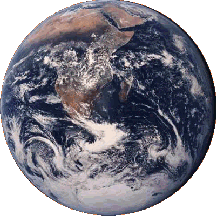




![]()

![]()